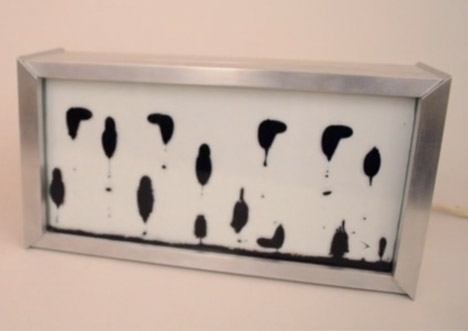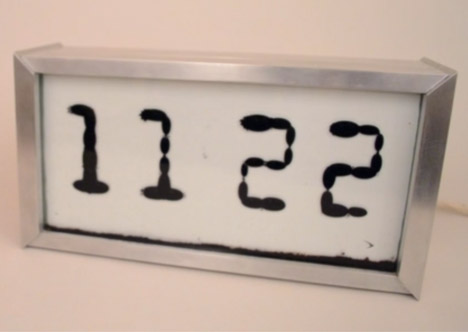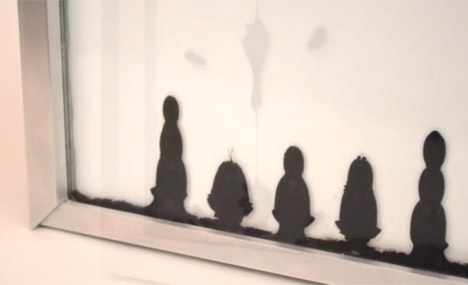Zelf Koelman's Ferrolic clock uses magnetic ferrofluid to tell the time
This clock by Dutch designer Zelf Koelman spells out the time with magnetic fluid under the control of electromagnets (+ movie).
Unlike traditional clocks, the Ferrolic has no mechanical parts and relies on embedded electromagnets to control the display's ferrofluid – a black liquid made up of suspended magnetic particles.

The fluid is held in a rectangular aluminium-framed screen that is filled with liquid allowing it to flow freely about the enclosure.
By turning on the electromagnets, the ferrofluid is attracted to where the magnetism is strongest and forms the clock numbers on the display.

"Its unique dynamics are the visual result of the black fluid continuously finding balance between gravity, magnetic fields and its own van der Waals forces," Koelman explained.
The software used to control the magnets is accessible via a web browser, meaning users can customise it themselves and adapt the shapes and numbers shown on the display.

"Because the fluid behaves in an unpredictable way, it is possible to give the bodies, perceived in the Ferrolic display, a strong reference to living creatures," the designer said.
Koelman, who is currently completing a masters in industrial design at the Eindhoven University of Technology, has spent the last year researching the fluid's possibilities.

"A few years ago I fell in love with the magical characteristics of a little black 'blob' in a bottle," he said. "The dynamics and shape of this liquid body was much like a living entity. I decided to allow this entity to live its own life and have a function."
Ferrofluid was also used to create shapes in time with music in Nigel Stanford's Cymatics music video, while designer Jólan van der Wiel has previously used magnets to form spiky stools, dresses and shoes.

The Ferrolic is currently still in development, although the designer intends to make small batches available for pre-order, with each clock costing $8,300 (£5,300).
Other examples of atypical clocks include Rachel Suming's engraved aluminium plates that overlap every three hours to reveal the time, and Japanese design collective Bril's Coniferous Clock – made of leaves that fade from green to brown over the course of year, to create an annual timepiece.